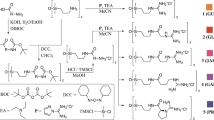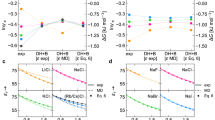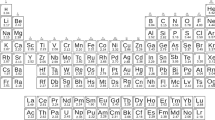Abstract
SIR OLIVER LODGE'S highly suggestive letter (June 23, p. 176) will be welcome to the many chemists who have been endeavouring to interpret chemical phenomena in terms of the electronic theory of the physicist. The proposition that the “Faraday tube” may be subdivided would appear to be capable of being widely applied in connection with many of the most interesting phenomena of chemistry. Thus not only would the existence of water of crystallisation and the formation of so-called molecular compounds be thereby brought into line with the more typical manifestations of valency, as pointed out in Sir Oliver's letter, but it would appear that it may possibly enable the hitherto conflicting hydrate and dissociation theories of solution to be harmonised. Thus in the case of an electrolyte such as sodium chloride, we should in the dry state regard the sodium atom united to the chlorine atom by means of a Faraday tube or bundle, as it may more appropriately be designated, the union leading to the great stability of the compound as such. On the addition of water, however, some of the constituent fibres or strands of the bundle become deflected in such a way that the sodium and chlorine atoms become respectively combined with water. With sufficient water present the original union between the sodium and chlorine atoms will become entirely severed, the Faraday bundle starting with its positive extremity on the sodium atom will terminate at its negative end by means of a plurality of strands on a number of water molecules, and similarly the Faraday bundle emanating by its negative extremity from the chlorine atom will terminate at its positive end in a plurality of strands also on a number of water molecules. In such a solution we should thus have independence of the sodium and chlorine atoms, or the phenomenon of ionisation. In such a solution, moreover, the union between sodium and chlorine would be entirely abolished through the complete diversion of the strands of the Faraday bundle formerly uniting them, whilst the union between the oxygen and hydrogen of the water molecules would be but slightly weakened owing to only a small fraction of the total number of strands in the bundles uniting the oxygen and hydrogen in each molecule being diverted by the sodium and the chlorine. The dissociation into its ions of an electrolyte on solution in water would thus be the consequence of the antecedent hydration of the ions.
This is a preview of subscription content, access via your institution
Access options
Subscribe to this journal
Receive 51 print issues and online access
$199.00 per year
only $3.90 per issue
Buy this article
- Purchase on Springer Link
- Instant access to full article PDF
Prices may be subject to local taxes which are calculated during checkout
Similar content being viewed by others
Author information
Authors and Affiliations
Rights and permissions
About this article
Cite this article
FRANKLAND, P. Residual Affinity. Nature 70, 222–223 (1904). https://doi.org/10.1038/070222e0
Issue Date:
DOI: https://doi.org/10.1038/070222e0
Comments
By submitting a comment you agree to abide by our Terms and Community Guidelines. If you find something abusive or that does not comply with our terms or guidelines please flag it as inappropriate.



